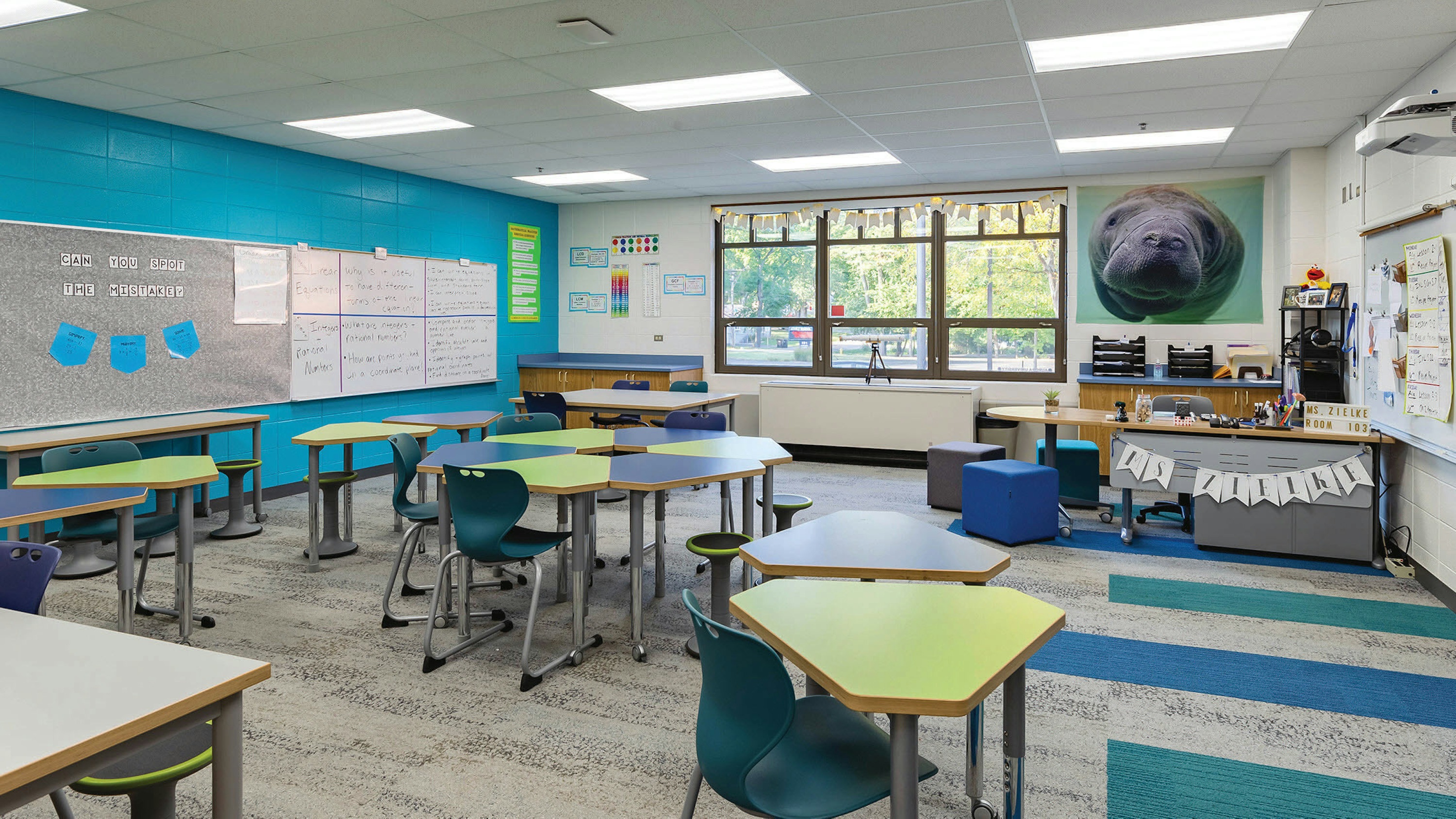
A shift in the pedagogy of learning has moved toward student agency and freedom for students to choose how they want to learn at a given moment. To support this shift, school districts and their design partners aim to create environments that allow voices to be heard, remove barriers, promote peer-to-peer opportunities, and let students showcase their individual superpowers. As districts build new and renovate existing spaces, each area is an opportunity to provide the best overall experience for students and staff alike. This effort extends well beyond the classroom and bleeds into support offices, resource rooms, team spaces, collaboration centers and corridors. The goal is not only to create a multifunctional space using the built environment, but also to enhance technology and integrate flexible furniture in classrooms so that learning opportunities for students are endless.
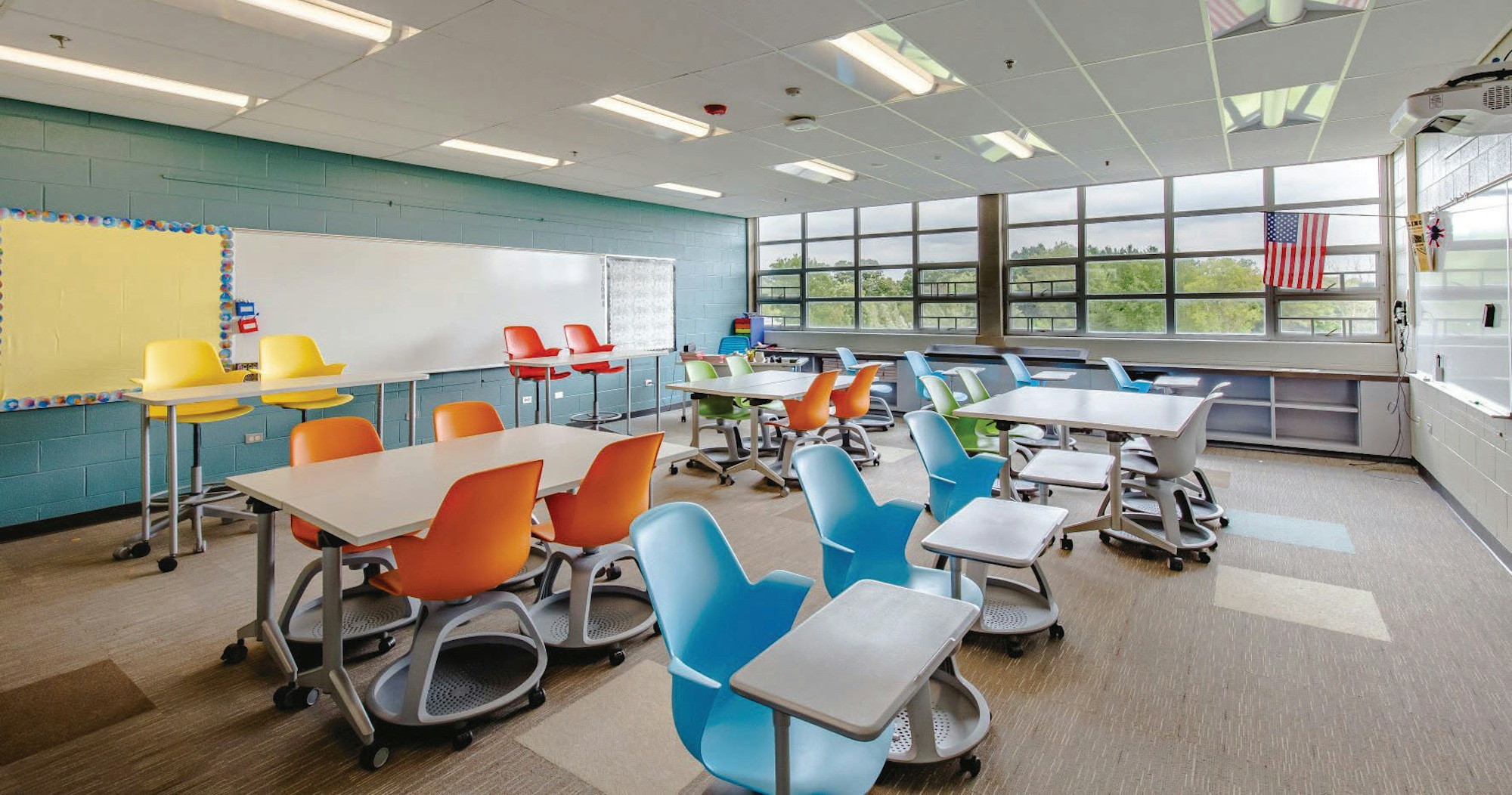
The traditional classroom was static, assuming that one size fits all. Next-generation learning environments demand exploration of the connections between learning, movement, and adaptability. Providing a breadth of furniture options to a district supports the health and well-being of students and staff. It’s important for districts to understand their options, identify the criteria that aligns with their educational initiatives, and create a unique solution for their community.
Understanding Furniture Options and Features
School furniture is no longer simply chairs and desks for each student. Furniture is now a broader exploration into a variety of seating and work surface options. Learning environments comprise multiple zones and support a variety of activities. These spaces need to be reconfigurable to enable different group sizes and workflows, from individual learning to small group and full class learning.
For example, having several student chair options and a combination of seated- and standing-height tables can better address ergonomics and learning styles. Soft seating and floor seating options promote more casual connections between students, improve soft skills, and create a more relaxed environment for students to engage with the curriculum. Sensory seating, such as wobble stools and rockers, give students added stimulus and body awareness, which supports student focus.
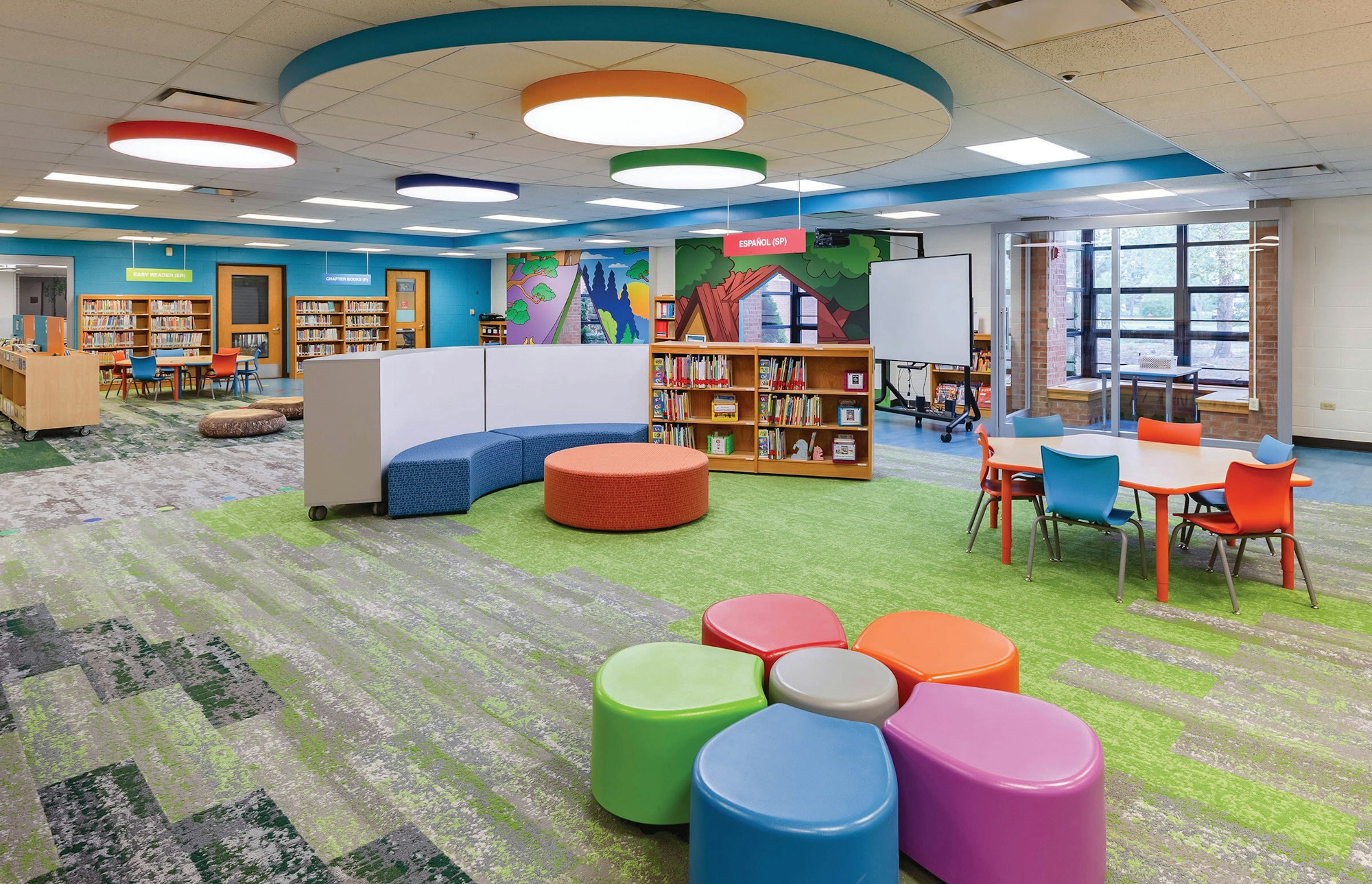
Specialty classes often have specific furniture needs. For example, outdoor classrooms benefit from durable materials that can withstand long durations of sun exposure and weather events. Powered furniture in technology environments reduces the need for floor boxes or raceways beneath the flooring and brings power directly to the work surface. Access to mobile storage carts with multiple bin sizes and configurations allow a single classroom to be used for science, art and STEM subjects in the same day by moving specific carts between classrooms. As classrooms move away from assigned seats, the need to re-envision storage, whether fixed or mobile, is a key component to the design of functional spaces.
Identifying District Criteria for Selection
Furniture options are almost endless. How do districts determine the right set of furniture and features for their community? Using a collaborative and inclusive process between various stakeholders and the design team allows furniture packages to be tailored to the needs of each district. This inclusive process should involve meetings with district administrators, teachers, and staff to determine the primary guiding principles and objectives around which furniture should be selected. Key questions include:
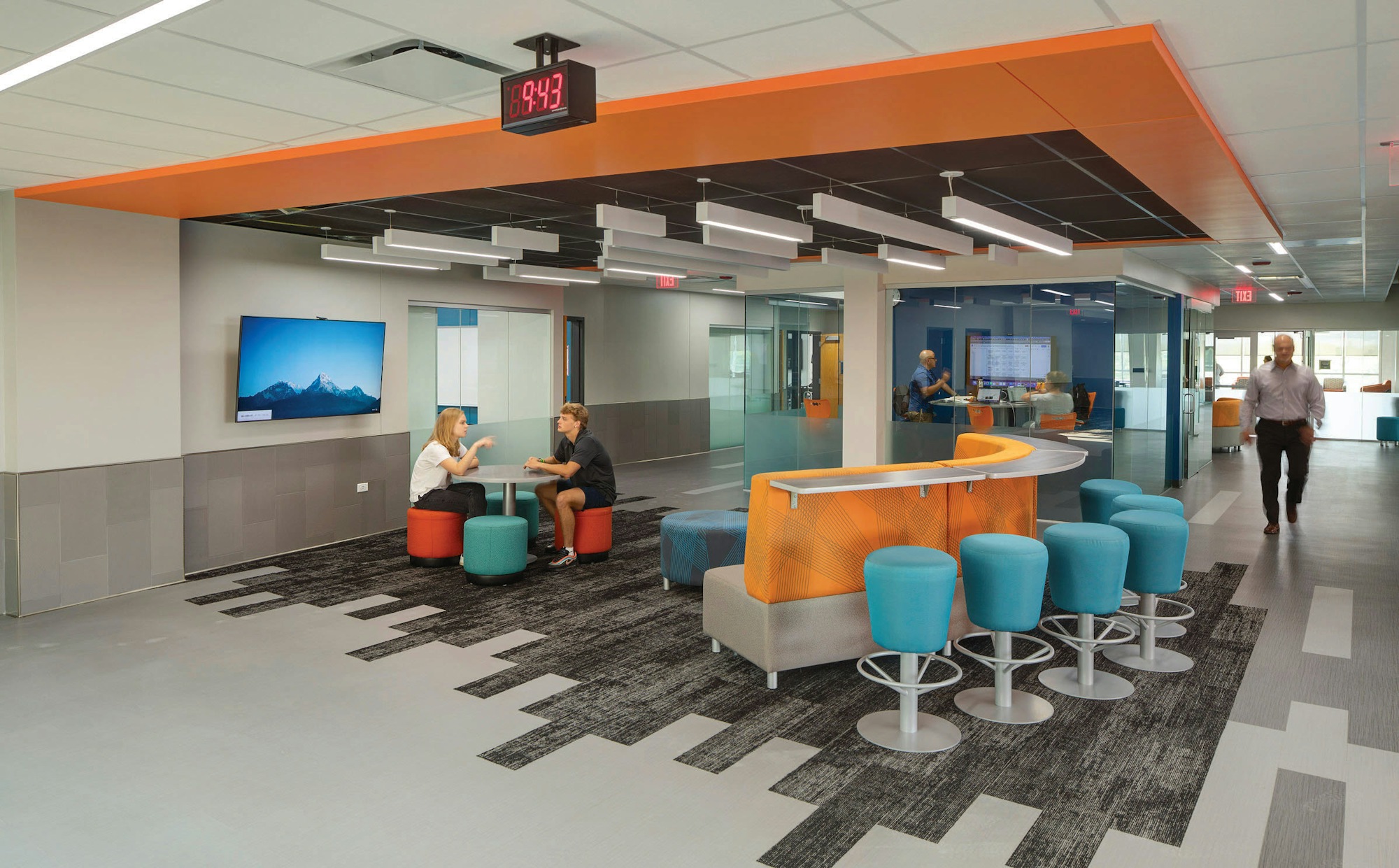
These guiding principles form a high-level understanding and unify the district’s approach to addressing change. However, the process is not one-size-fits-all. For example, a district may choose to consolidate the student enrollment into groupings by age, such as early childhood, elementary classrooms, and middle school classrooms or by curriculum areas, such as physical arts, sciences, music and theater, special education, and resource.
When using one or both of these strategies, group representatives should be part of the process to identify criteria for the students and staff they represent. The determined criteria then become a tool to evaluate various furniture options and features to align with district goals and objectives. Key questions at this stage include:
The desired outcome of this collaborative process is to select flexible and multi-use furniture pieces for students and staff, finish material and color selections that enhance the space, and soft seating opportunities to create versatile environments that meet the needs of the district community.
Creating a Unique ‘Kit of Parts’
Districts often struggle to find the balance between providing the best opportunities for students and managing limited resources to support their initiatives. It is important to consider how the district will adapt and grow, once furniture has been selected to meet the needs of an ever-changing pool of students, while remaining committed to helping students reach their full potential.
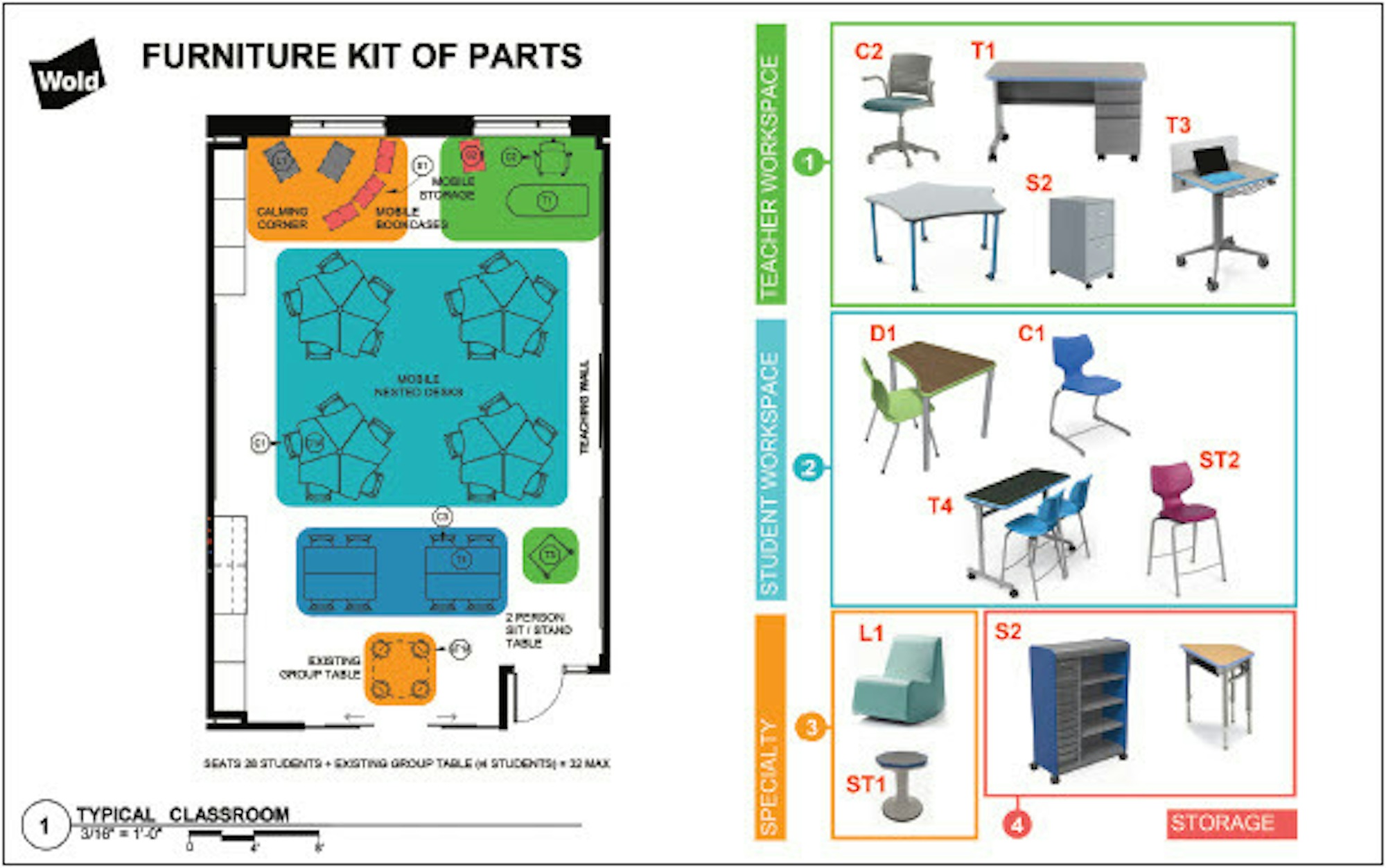
The “kit of parts” and furniture pilot process are two recommended tools. The kit of parts refers to the concept that the district determines a pool of furniture for each focus group. For example, a student chair for a first-grade classroom may be the same stacking chair that is selected for a fifth-grade classroom, but they are two different sizes and the fifth-grade chair includes casters for quick reconfiguration of the classroom between lessons. By sharing the same pool, the district is better equipped to adapt the building over time for things like changes in occupancy needs, preferred group styles for academic subjects, and ergonomic enhancements that fit varying student statures.
But what would happen if a first-grade classroom needed to become a second-grade room the following year? The district may need “attic stock” of an entire set of classroom furniture, or both grade levels can use the same floor seating options and stackable student tables with a few student chairs at varying heights to address the needs of that year’s class. Finally, the kit of parts allows teachers to move classrooms, co-teach, or use alternative learning environments at any time and remain prepared to optimize the classroom furniture.
The second tool is to conduct a furniture pilot process by testing various pieces and options before purchasing the full order. It can be a challenge to predict the success of a particular furniture feature when students and staff are only familiar with their current arrangement. A pilot process allows time to test whether height-adjustable tables are used in a hybrid learning space or the ability to flip and nest a similar group table makes the environment more flexible. Throughout the pilot process, follow-up discussions and surveys should be conducted to collect feedback on the performance of each furniture piece. Both staff and students should share feedback on preferred pieces, ideal features, comfortability, versatility, mobility, cleanability and material finish. The results from the pilot process and meetings with specialty groups are then incorporated into the creation of a final furniture package.
Why Furniture Matters
The impact of school furniture on academic and social-emotional learning is undeniable. Students interact with furniture more than any other design element. It can create learning zones, bring students together, provoke conversations, offer choice, improve ergonomics, and help students relax so they can think and focus. For these reasons and more, furniture must support all learning styles and academic performance.
By taking an inclusive approach to furniture selection, answering strategic questions with all parties throughout the process, creating a kit of parts, and piloting furniture options, school districts and architects can improve learning outcomes for current students and future learners.
Alison Andrews is an educational planner and associate at Wold Architects and Engineers. She can be reached at aandrews@woldae.com. Monica McCrory is an architect and interior specialist at Wold Architects and Engineers. She can be reached at mmccrory@woldae.com.
This article was originally published in Learning By Design on October 4, 2022 and can be viewed here.